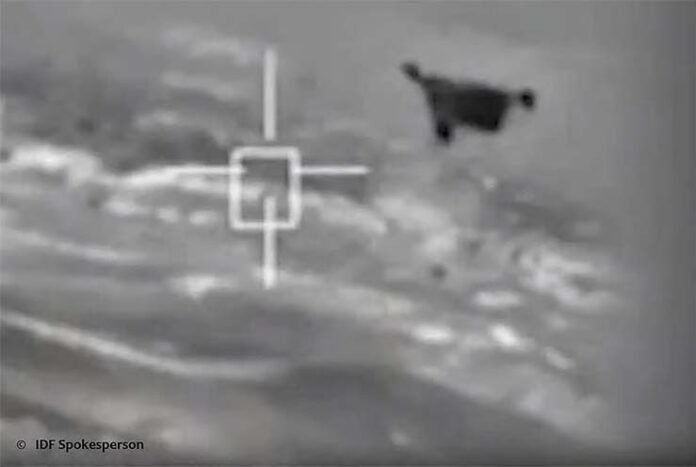Tel Aviv. The Israeli multi-layered air defence system needs another low layer to deal with the threat of the low flying Iranian made armed UAVs and armed drones used by the Hezbollah in Lebanon since the war broke out on October 7.
This conclusion by two senior Israeli experts should turn on big red lights in other countries. In a research paper written for the Begin – Sadat Centre for Strategic Studies in Israel, Brig Gen (res.) Eran Ortal, who recently retired from military service as commander of the Dado Centre for Multidisciplinary Military Thinking and Brig Gen (res.) Ran Kochav (RanKo), former commander of the Israeli Defence Forces Air and Missile Defence Corps pointed to the need in change.
The two experts say that at the beginning of this decade, a new-old threat layer gradually developed: numerous cheap, small, unmanned aircraft with a low radar signature. “The world of drones and unmanned aircraft completely changed the premise of absolute air superiority. The Israeli Air Force does continue to rule the skies, but “under the noses” of the advanced fighter jets, a new air layer has been created. This is the “low sky” layer.”
The two experts say that the enemy has found a loophole here. The Air Force (and, within it, the air defence corps) is required to defend against the combined and coordinated threats of missiles, unmanned aircraft systems and rockets.
According to the two experts, aerial confrontation between attackers and defenders becomes a sophisticated professional combat when the adversaries use aircraft with pre-programmed, shifting paths that may perform a variety of tricks instead of piloted aircraft. Such a conflict necessitates further action. These primarily involve identifying methods for tracking, localisation, detection, precise identification, and—above all—faster decision-making based on real-time access to more information.
Even an air defence system that can successfully intercept thousands of missiles and rockets at a time will be able to engage fewer air targets at once as the difficulty of controlling the air combat grows. As a result, the array becomes more exposed and susceptible.
“The current war greatly accelerated the development of this threat. The enemy has spotted the breach and is daily improving the means and operational techniques at his disposal. The UAS threat can no longer be seen as separate from the ballistic, missile and rocket threats. The enemy is perfecting techniques by which to use these tools in a coordinated manner to overcome our air defence arrays, destroy them, and continue to hit targets on our front and home front,” the experts specified.
The experts say that this is a risky process that is happening very quickly. Israel needs to learn quickly, organise itself well, and get ready practically. From light to heavy, the following practical difficulties need to be addressed:
- Central control is meant to enable effective, optimal and efficient decision-making. Processing information from all sensors makes it possible to launch the best interceptor from the best location at the best moment.”
- Highlighting the Israeli air defence system’s multi-layered architecture, the experts say that there isn’t much protection or mutual aid among the layers. As already stated, the assumption was total air supremacy. Optimising the use of interceptors against a massive load of missiles and rockets was the primary problem. As a result, every tier was created to combat a certain kind of rocket or missile. It isn’t really possible for Iron Dome to help Arrow batteries or support their missions. This restriction applies to all the other layers as well.
“The first and most important will be the addition of another interception layer – point protection – which will enable a relatively high level of security for essential sites and assets. This layer would only be launched when it is clear that the other layers have failed and only to protect a critical asset for the country, such as an important power plant or vital component of the air defence system,” the experts suggest.
It will be required to (re)establish an organisation at the front that employs more mobile, short-term tactical methods. The picture that the ground combat commanders see will need to be considerably more synchronised with this flexible arrangement. It will be necessary to have a tactical air defence system, similar to the northern anti-aircraft units that were shut down over fifteen years ago.
“It is vital for Israel to re-establish a tactical air defence system at the front. Israeli air superiority is incomplete without it. The sky needs to be rearranged,” the experts emphasise.
-The writer is an Israel-based freelance journalist. The views expressed are of the writer and do not necessarily reflect the views of Raksha Anirveda






